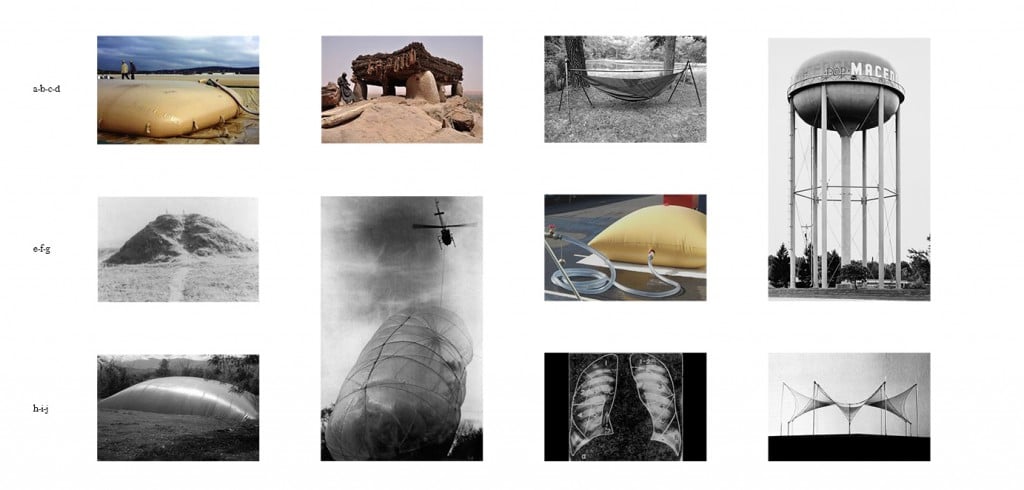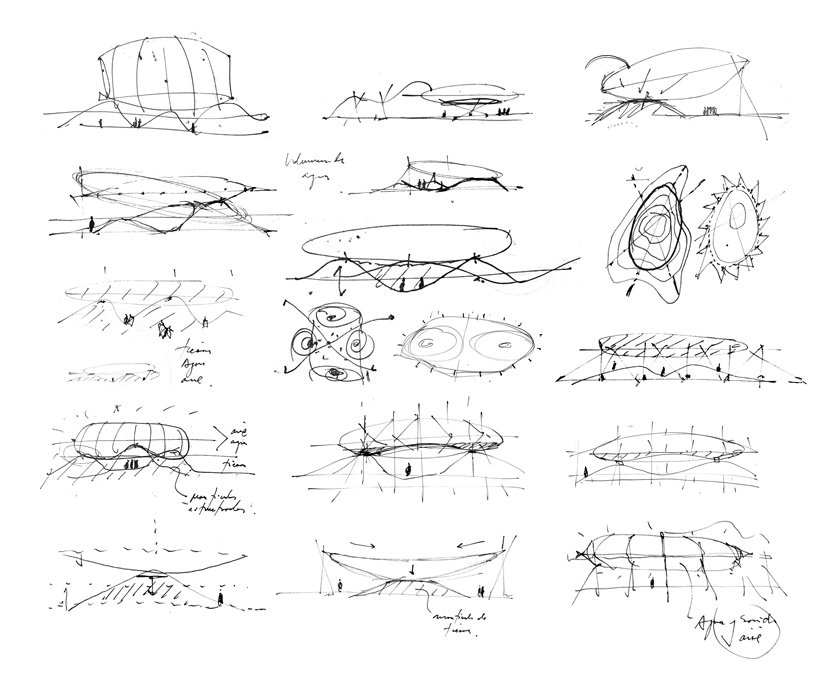Flexible Tank
Proyecto: Pabellón, 2019
Arquitectos: Tomás García de la Huerta, Xaviera Gleixner
Colaboradores: José Miguel Pinto, Jonas Klaaßen
Asesoría en estanques flexibles: CIDELSA
Asesoría estructural : Z3RCH, Structural engineering
This project explores the architectural possibilities of a flexible water cistern (tank): an industrial element that gives shape to the problem of water today, its possibilities of collection, retention, easy mobilization and care.
Flexible cisterns are interesting and valuable devices that reveal not only the current and growing problem of water shortages but also the inequality in the distribution of the same by the privatization and commodification of this basic and fundamental good in Chile.
Faced with this scenario of “water stress” to which we are subjected as a country, we are not interested in using water as entertainment, fun or evidently aesthetic purpose. On the contrary, we are interested in containing it, reserving it, caring for it, showing it as a critical and dynamic volume.
The flexible tanks allow the installation of water in places with difficult access or remote locations remote in a quick and agile way. A device for the emergence of water that in Chile has principally been used in rural and industrial contexts for being a simple, economical, durable and easy-to-move solution. Flexible tanks have a lifespan that can exceed 30 years. These can be manufactured with Biobrane membrane, sustainable material of high durability that thanks to the Texyloop method, technical fabrics are recycled and can be reused later in other applications. Taking advantage of these qualities, we are interested in donating the used cistern for some isolated locations.
We have proposed to erect a flexible water cistern, a tank that with slight adjustments will transform it into cover, mixing air and water. 25% of water 75% of air-supported thanks to a collaborative structure between a mound of compacted earth (static) and another of tensegrity (flexible) where elements subjected to traction and compression tie the entire system. The weight of the water activates all the structural elements. Like a dead weight, the cistern lies on top of a “bed”, “network” or “shirt” that connects with the perimeter pillars. This weight is transformed into surface tension on the “bed” which is derived as traction to the cables and compression to the perimeter pillars forming a continuous flow of energy that is closed within the structural system.
To find the perfect balance between structure, weight, function and aesthetics, it will be necessary to draw upon the physics of the Barlow formula (S = PD / 2), which will guide us in the sizing of the mound to find the necessary curves in the ” bed “to decrease the forces/tensions in the structural elements and thereby find the equilibrium point of the water-structure-earth set.
The flexible cistern is understood as an organ, one not so distant from the organs of its own body.
In this case an organ of the park, that could water it, connecting to the irrigation water system during the installation months. Thereby, it will be a body in movement, in continuous, alive exchange, that does something to amplify its effects and interaction with the environment.
The cistern inside it could work like a pool, only noticeable by sound and vibration. The water will enter and leave it (like any tank) moving and slightly changing its shape. The interior air pressure will be fairly stable, being regulated by an entrance called “venting”. Thanks to a “pump” the required air pressure will be controlled with minimal resources, emitting a slight respiratory sound.
We are interested in creating an experience marked by the sound, movement and vibration of this organ. An atmosphere determined by the cistern as centre, organ and brain that virtually and physically qualifies the interior proposal of the pavilion, as an interactive structure. We will study the automatic valves (commonly already installed in some of the tanks for drip irrigation) to connect them to motion sensors and thereby activate a drip system that will subtly mark the limits of the space under cover. Minimum drops will fall from the cover, like flashes of light, like the memory of water more than water itself, evidencing the scarcity of this resource. With respect to the sound, “excitators” connected to the skin of the cistern will transmit the internal sound of the water in circulation in amplified form.
We propose a cover with living thickness and valuable content, endowed with certain senses that allow it to be extended. Air, water and land are the main elements used as a means of living and a structural environment. A breathable, drinkable structure that seeks relationships more than forms, or rather the living capacity of the form.

REFERENCES
a) Flexible tank b) Toguna in Dogón c) Hiking hammock d) Water Tower in Macedonia (Bernd and Hilla Becher) e) Mapuche Kuel f) Cubic Feet Package (Christo) g) Flexible tank h) Flexible tank i) lungs j) Dance Pavilion (Frei Otto)




